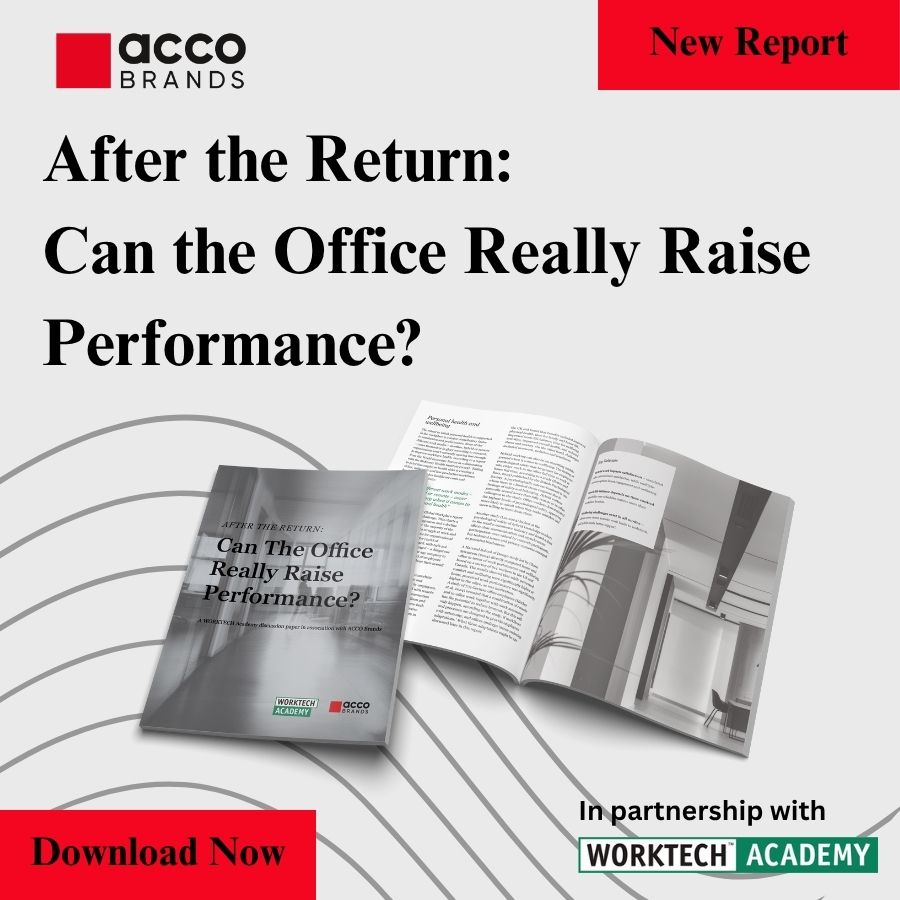How to use space optimisation data to reduce office costs
A tougher economic climate means businesses are on the hunt for space cost savings based on smart data analytics, as the second in our article series with Deskbird explores
Efficient use of office space is essential for businesses looking to reduce costs and raise productivity. Space optimisation involves tailoring the available workspace to meet the diverse needs of employees, considering factors such as collaboration, focus time and relaxation. By analysing occupancy data and understanding the roles of different resources, extra space can be identified and repurposed.
This article – the second in our series with hybrid work experts at Deskbird – explores how leveraging space optimisation data can effectively minimise office costs, with a particular focus on the benefits of hybrid work models. We’ll also discuss how space occupancy data can inform workspace reshaping and downsizing, ultimately leading to significant cost savings.
What is space optimisation?
Space optimisation, specifically in office real estate, involves using the available space efficiently to meet employee needs and adjusting the amount of space based on occupancy, which differs depending on if the company is fully in-person, hybrid or remote. The more people coming in daily, the higher the occupancy will be on average. Or, for a distributed team where people work from different locations, occupancy will likely be low.
Analysing desk, office, and meeting room occupancy helps identify extra space that can be repurposed. The tracking of this usage can be done through reservation systems, which provide data for downsizing or repurposing decisions. For example, a hot desking app collects data about who comes into the office and when. This is key because office usage fluctuates by the time of day and week, especially when hybrid work models are employed. Identifying peak days aids space allocation and resource planning for an optimised office environment.
Read the first article in this collaborative series with Deskbird for a deeper dive into the meaning of space optimisation, including a breakdown of the difference between office occupancy and utilisation.
How hybrid work reduces costs
One of the main benefits of flexible work models is that they help save on costs. With the sharp economic downturn happening in the EU, UK and US in 2023, improving economic efficiency is a top priority for businesses of all sizes. Understanding how hybrid work is cost-effective creates a base for exploring the economic benefits of space optimisation.
It reduces energy consumption and improves sustainability: Companies that adopt flexible models require fewer employees daily, resulting in more efficient use of resources. Less electricity is used as fewer rooms, desks, and technology are employed. Additionally, the resources needed for maintenance can also be reduced as not as much upkeep will be needed. In turn, these improvements also benefit sustainability initiatives.
It increases employee attraction and retention: One of the most costly parts of running a business is hiring new people. It requires the human capital of an HR or recruitment team and takes weeks or even months of searching, interviewing and consideration. However, hybrid models improve work-life balance, which prevents losing employees due to dissatisfaction. Additionally, flexible models are becoming even more popular among job seekers, meaning your business can attract employees from around the world by implementing such models.
According to research conducted by IWG, 72 per cent of individuals employed in office settings would prioritise long-term flexibility in their work location over receiving additional compensation. Furthermore, two-thirds of these workers would decline a new position unless it provided hybrid working arrangements.
How space occupancy data reduces office costs
Collecting actual data about how certain areas of your office are being used supports you in making impactful changes when redesigning the space. Utilisation data helps outline your employees’ needs by revealing which areas they gravitate towards the most often. Creating a space that is then optimised to fulfil these desires not only improves your team’s productivity but also their happiness.
Space occupancy and utilisation data also provide justification for downsizing office space. If the data collected shows that some of the team only comes in part-time and some do not come at all, the company can move into a smaller space. There is no need for a massive office if the only thing occupying it is empty desks.
Coordinated hybrid work model
The key to successful space optimisation is using a coordinated hybrid work model. While we have already discussed the benefits of hybrid work itself, it is coordinated models that have the greatest impact.
So, what is coordinated hybrid work? It is a well-structured and organised model using workplace technology. The best example is the implementation of a workplace management system, such as a hot desking or week planning software. These platforms allow business leaders, CRE managers, and facility managers to track who is coming into the office, when they are coming, and where they are sitting.
This provides immediate impact as the data is instantly collected. It also gives employees the autonomy to plan their own schedules and setting arrangements. Research from Deskbird has suggested that coordinated hybrid work can win employees an extra day of productivity each week.
Desk sharing ratio
Another best practice for reducing costs while optimising your office space is establishing a desk sharing ratio. Desk sharing is another term for hot desking which means that different people can use the same desk at different times. In this model, most employees don’t have assigned desks but book them when needed.
However, this requires establishing a desk-sharing ratio first. The more people using one desk, the higher the ratio. To create the ideal desk sharing ratio, managers need to keep in mind how often employees come into the office, how long they stay, and the projected growth of the team.
‘The right data is the main driver of successful space optimisation strategies that ultimately reduce business costs…’
Collecting and analysing the right data is the main driver of successful space optimisation strategies that ultimately reduce business costs. It allows businesses to reshape their workspaces to align with employee needs, leading to increased productivity and satisfaction. Additionally, it can guide the decision to downsize rental space based on occupancy and utilisation.
By adopting best practices such as coordinated hybrid work models and establishing desk sharing ratios, companies can greatly reduce costs, boost efficiency, and become more financially and environmentally sustainable.








